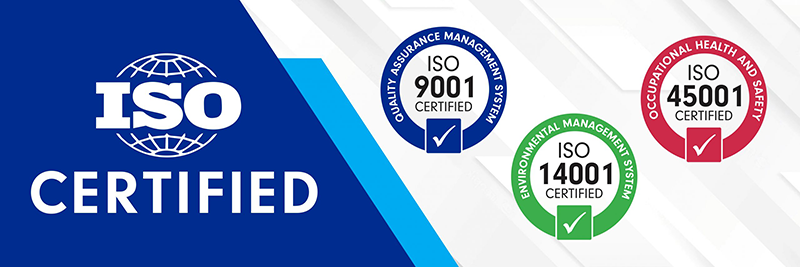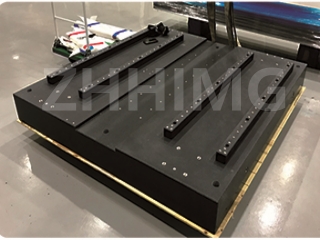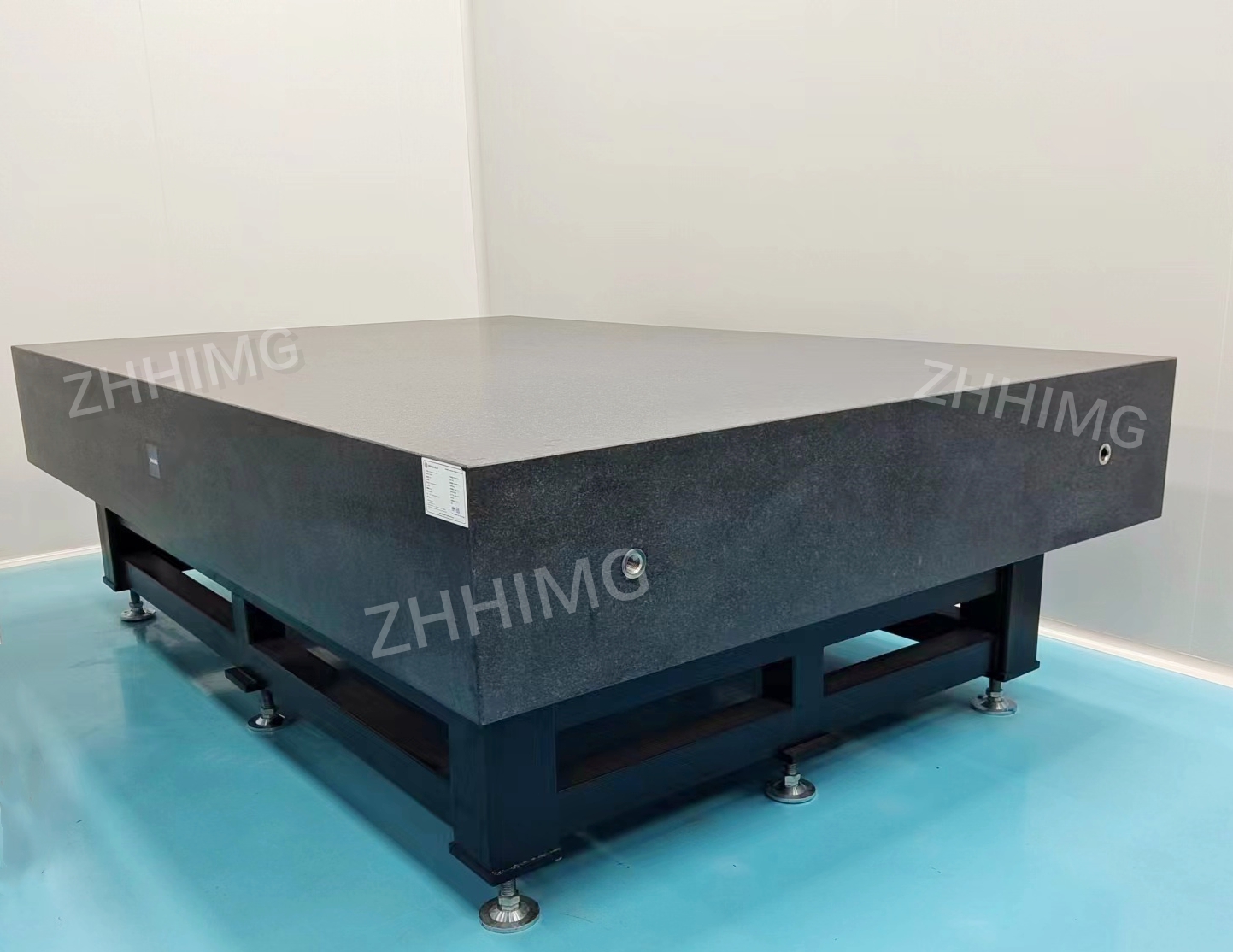In the field of high-end manufacturing and cutting-edge scientific research, granite precision base as the core support components of many precision equipment, its performance is directly related to the accuracy and stability of the equipment. The scientific and reasonable cleaning and maintenance methods are the key to excavating the maximum potential of granite precision base and extending its service life. The following are your details.

Daily cleaning: The little things are the real thing
Dust cleaning: After the completion of daily operations, choose a soft, dust-free cloth that does not wrinkle, and wipe the granite precision base surface with gentle and even movements. Although the dust particles in the air are small, they will affect the fit and operating accuracy of the base and the equipment after long-term accumulation. When wiping, pay attention to every corner of the base, including edges, corners and grooves that are easily overlooked. For narrow gaps that are hard to reach, a small brush can be useful, with thin bristles that can penetrate and gently sweep dust out without causing a scratch on the base surface.
Stain treatment: Once the surface of the base is found to be contaminated with stains, such as cutting fluid sputtered during processing, lubricating oil stains, or handprints inadvertently left by the operator, it is necessary to act immediately. Prepare an appropriate amount of neutral cleaner, spray on the dust-free cloth, gently wipe in the same direction on the stain, the strength should be moderate, to avoid excessive friction. After the stain is removed, quickly wipe off the residual detergent with a clean damp cloth to prevent the detergent from leaving traces on the surface of the base after drying. Finally, wipe the base thoroughly with a dry dust-free cloth to ensure that no moisture remains on the surface, so as not to cause water erosion. Special attention should be paid to the use of acidic or alkaline cleaners, which will chemically react with the minerals in granite, corrode the surface, and destroy its accuracy and beauty.

Regular deep cleaning: Full maintenance guarantees performance
Cycle setting: According to the cleanliness of the use of the environment and the frequency of use of the equipment, it is usually necessary to carry out a deep cleaning of the granite precision base every 1-2 months. If the equipment is in a harsh environment with more dust, moisture or corrosive gases, or is used very frequently, it is recommended to shorten the cleaning cycle to ensure that the base is in the best condition at all times.
Cleaning process: Before deep cleaning, carefully remove the equipment components connected to the granite precision base and take protective measures to prevent damage caused by collision during cleaning. Prepare a basin of water, wet the soft brush, dip in a small amount of mild special stone cleaner, along the direction of granite texture, carefully scrub the surface of the base. Focus on cleaning the tiny holes, gaps, and areas that accumulate dirt that are difficult to reach in daily cleaning. After cleaning, rinse the base with plenty of water, using a low pressure water gun (pay attention to control the water pressure, avoid damage to the base) from different angles to ensure that cleaning agents and dirt are completely removed. After washing, place the base in a well-ventilated, dry and clean environment to dry naturally, or use clean compressed air to dry, to avoid water spots or mildew caused by water stains.
Maintenance points: prevention based, durable
Collision prevention: Although the hardness of granite is high, but the texture is brittle, in the daily operation and equipment handling process, a little accidentally affected by heavy objects, cracks or damage may occur, seriously affecting its performance. Therefore, a warning sign is posted in a prominent position in the work area to remind the operator to be careful. When moving devices or placing objects, handle them with care. If necessary, install protective MATS around bases to reduce the risk of accidental collision.
Temperature and humidity control: Granite is more sensitive to temperature and humidity changes. The ideal working environment temperature should be controlled at 20 ° C ±1 ° C, and the relative humidity should be maintained at 40%-60%RH. The sharp fluctuation of temperature will cause granite to expand and shrink, resulting in dimensional changes and affecting the accuracy of the equipment; The high humidity environment may cause the granite surface to absorb water vapor, which will cause surface erosion and reduce accuracy in the long run. Enterprises can install constant temperature and humidity air conditioning system, temperature and humidity sensors and other equipment, real-time monitoring and control of environmental temperature and humidity, for granite precision base to create a stable and suitable working environment.
Precision detection and calibration: Every 3-6 months, the use of professional high-precision measuring instruments, such as coordinate measuring instrument, laser interferometer, etc., to detect the flatness, straightness and other key precision indicators of granite precision base. Once the accuracy deviation is found, contact professional maintenance personnel in time, and use professional tools and technology to calibrate and repair, to ensure that the equipment is always in a high-precision operation state.
Choose the correct cleaning and maintenance methods, take good care of the granite precision base, not only can it maintain excellent accuracy and stability for a long time, provide reliable support for your precision equipment, but also reduce the failure rate of equipment, extend the service life, escort your production and scientific research work, and create greater value.
Post time: Apr-10-2025

